Flanged Cylinders
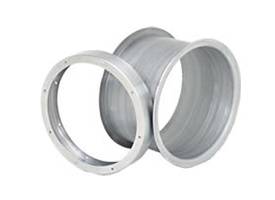
Both of these aluminum parts are components for industrial equipment. The Hub Ring, on the left, requires precise hole positioning on both flanges. The Housing, on the right, requires the opposing flanges to be parallel. Note that the flanges for the two parts are in the opposite direction; one toward the centerline, and one away. […]
LJ Rings
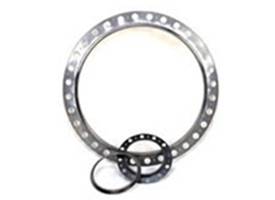
These stainless steel parts are the internal support structure for industrial valve seats. The Rings are covered with various rubbers to accommodate different field applications. The unique hole patterns address U.S. vs. overseas mounting requirements.
Mounting Rings

This set of aluminum parts is the body of a residential skylight. The Rings can accommodate various roof pitches while still providing a horizontal mounting surface for the lens.
Reagent Tray & Headlight Ring

The stainless ring on the left is a component of a blood analyzer. The cross-section is visually similar to a set of parentheses. This shape, called a re-entrant contour, requires a unique approach to tooling since the part becomes locked on the tooling during forming. An unblemished surface finish, passivation, and close tolerances are required […]
Oval Mounting Ring
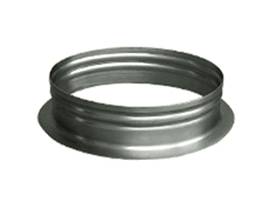
This oval collar is used as a glove port in a bio-hazard containment chamber. The dry-box glove attach at each of the ribs for an airtight seal.
Static Discharge Shield

This aluminum part is a shield to discharge static electricity. One end requires a double radius curl, while the other end requires a flat flange for mounting. The hourglass shape, or re-entrant contour, dictates a unique approach to tooling. The part application requires a blemish free surface finish, both inside and out.
Bellmouth
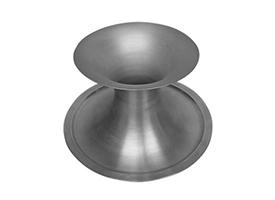
This hourglass contour is a common shape for spinning. This Bellmouth is difficult to form due to the very large difference in diameter between the open ends and neck. The application, as cable guide, requires a smooth, one-piece construction. Notice the integral, raised outer lip which serves as the mounting surface.
Spitoon

This brass spitoon is created by joining three separate parts, all formed via spinning. The geometry, material and finish combine to make an attractive part.
Kettle

This hourglass-shaped Kettle is used in the food service industry. This type of shape is called a re-entrant contour because of the narrow waist. Metal spinning process is typically the most cost effective forming solution for this type of contour.
Base
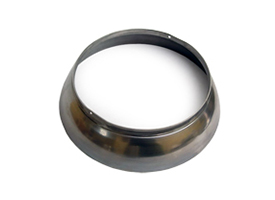
This part supports a pressurized oxygen tank for a specialty mounting application. It features two, flat parallel mounting faces with holes. A consistent curvature is required to cradle the mating part without a gap.
